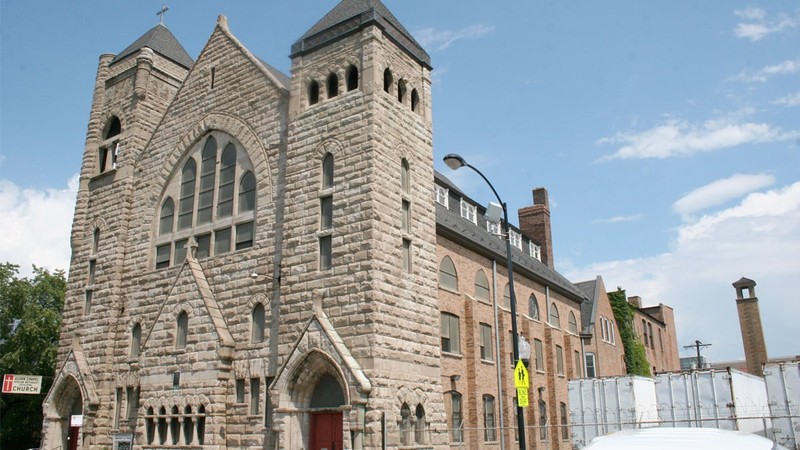Quinn Chapel A.M.E.
Introduction
Text-to-speech Audio
Quinn Chapel A.M.E (African Methodist Episcopal Church) is Chicago's oldest black congregation, first meeting in a private home as a non-denominational prayer group in 1844. Indeed, the group first met only one year after the incorporation of Chicago. The church played an integral role in the abolitionist movement leading up to and during the Civil War. The 1871 Great Chicago Fire destroyed the group's first church building (circa 1853). However, the congregation survived, using temporary locations for more than twenty years; they constructed a new chapel (the now-historic structure) in 1892. Frederick Douglass, Martin Luther King, Jr., President Barack Obama, Mayor Richard M. Daley, Susan B. Anthony, and a host of notables have spoken at Quinn Chapel A.M.E.
Images
Quinn Chapel A.M.E. in Chicago

Backstory and Context
Text-to-speech Audio
The church supported more than fifty members by 1848, including many ex-slaves. The group played an active role in the city's abolition movement. After Congress passed the 1850 Fugitive Slave Act, the congregation vowed to risk their own lives to protect and give refuge to slaves. Quinn Chapel became a significant point on the Underground Railroad, a secret network of safe locations that helped slaves escape the South and find new homes in free Northern states or Canada.
After the war, the church continued its activism, intent on helping African Americans. In 1893, abolitionist Frederick Douglass spoke to around 1,500 members at the church on the significance of Haiti, a predominantly black nation whose slaves led a revolt that resulted in the nation's independence. The church has also helped its local Black community, including founding and aiding institutions such as the Elam Home, the Wabash Avenue Y.M.C.A., Moseley Playground, and Provident Hospital, the nation's first hospital owned by African Americans.
By the twentieth century, Quinn Chapel A.M.E. was a significant part of Chicago's African American Bronzeville neighborhood. The church continues to thrive in the twenty-first century and exists as an integral part of the local Black community.
Sources
"About Quinn Chapel." The Restoration of Quinn Chapel AME Church. quinnchicago.org. Accessed March 2 2023. http://restore.quinnchicago.org/about.html
Quinn Chapel A.M.E. Church Archives. Chicago Public Library. Accessed March 3, 2023. https://www.chipublib.org/fa-quinn-chapel-a-m-e-church-archives/.
Spivey, Charles S. and Shaela C. Dunne. "Nomination Form: Quinn Chapel of the African Methodist Episcopal Church." National Register of Historic Places. archives.gov. 1978. https://catalog.archives.gov/id/28892400.
WTTW (PBS) Chicago: "DuSable to Obama | Early Chicago | Quinn Chapel." https://interactive.wttw.com/dusable-to-obama/quinn-chapel
